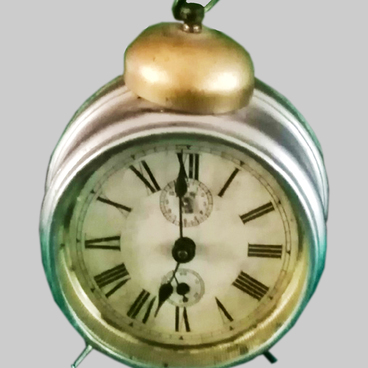In the ‘Large sitting room’ of the Aksakov family Museum on the corner-shaped bookcase in the style of Thonet stands a rather unremarkable item – a very heavy jewelry box, dating back to the early 20th century. It is made of metal imitating bronze, has a rectangular shape and is decorated with patterns engraved on the entire surface of the casket. This box has a lock, but the key to it was not preserved. Since it had a lock and stood on the bookcase next to the desk, we can assume that once it stored business papers or valuable letters.
The lid of this casket is mounted on special hinges. There is a barely noticeable slit in it: it is possible that someone subsequently used this box as a coin box. On the inside of the lid, the slit is covered with leather, thus making it almost invisible. Also there are pen marks visible on the lid handle, which, however, is currently missing. There is no fabric trim inside the box, and it is unknown whether or not it was supposed to be there.
Most frequently, caskets are used to store small but valuable items, such as money, important documents, items made of rare metals or precious stones. The caskets date back to ancient times and probably originate from chests that served as storage for clothes. In 1598 the word for jewelry box, ‘Shkatula’, was first mentioned in Russian language, and in 1610 - its modern form ‘Shkatulka’. According to Max Fasmer’s Etymological Dictionary of Russian Language, in the word “Shkatulka” was created by merging Polish, Italian and Central Latin words.
As a rule, caskets have a lock. In the 16th-17th centuries, sophisticated caskets with hiding places in the lid or under a false bottom were used for greater safety. In the 19th century caskets “with a secret” started appearing, which could only be opened through some unobvious action or a very complex series of manipulations. Since ancient times, some caskets became magnificent examples of decorative and applied art: for example, in the Louvre there is a richly decorated golden jewelry box, which belonged to the French King Louis IX in the 13th century.
The lid of this casket is mounted on special hinges. There is a barely noticeable slit in it: it is possible that someone subsequently used this box as a coin box. On the inside of the lid, the slit is covered with leather, thus making it almost invisible. Also there are pen marks visible on the lid handle, which, however, is currently missing. There is no fabric trim inside the box, and it is unknown whether or not it was supposed to be there.
Most frequently, caskets are used to store small but valuable items, such as money, important documents, items made of rare metals or precious stones. The caskets date back to ancient times and probably originate from chests that served as storage for clothes. In 1598 the word for jewelry box, ‘Shkatula’, was first mentioned in Russian language, and in 1610 - its modern form ‘Shkatulka’. According to Max Fasmer’s Etymological Dictionary of Russian Language, in the word “Shkatulka” was created by merging Polish, Italian and Central Latin words.
As a rule, caskets have a lock. In the 16th-17th centuries, sophisticated caskets with hiding places in the lid or under a false bottom were used for greater safety. In the 19th century caskets “with a secret” started appearing, which could only be opened through some unobvious action or a very complex series of manipulations. Since ancient times, some caskets became magnificent examples of decorative and applied art: for example, in the Louvre there is a richly decorated golden jewelry box, which belonged to the French King Louis IX in the 13th century.



